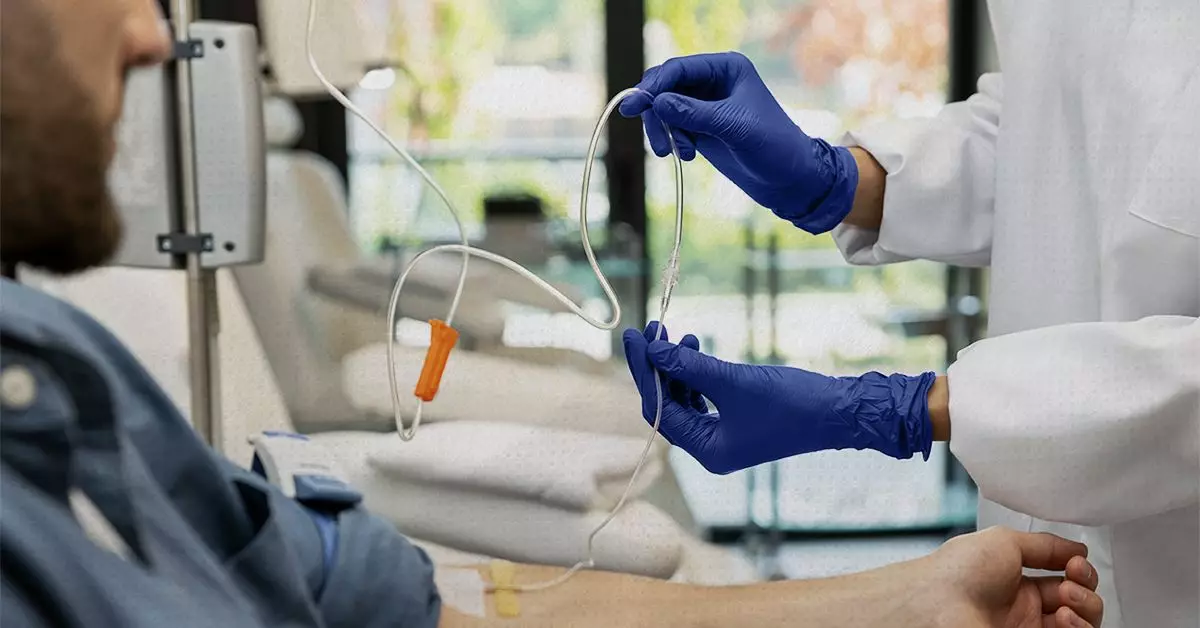Lymphoma, a cancer that originates in the lymphatic system, encompasses a variety of subtypes and treatment modalities. As patients navigate their diagnosis, determining the best approach can feel overwhelming. This article examines the treatments available for lymphoma, indicating the significance of personalized medical care in this complex disease.
The Multifaceted Nature of Lymphoma Treatment
Treatment for lymphoma is not one-size-fits-all; rather, it is a multifaceted approach that can include chemotherapy, radiation therapy, immunotherapy, targeted therapy, and sometimes bone marrow transplants. Each type of lymphoma is unique, and specialists often tailor treatments based on specific diagnosis, disease stage, and the patient’s overall health.
Patients may opt for a combination of therapies, with their healthcare team playing a crucial role in recommending the most effective options. Continuous communication and detailed consultations ensure that patients are well-informed about the various facets of their care, thereby enhancing adherence to the treatment plan.
Watchful Waiting: A Strategic Approach
In cases where lymphoma progresses slowly and does not cause immediate symptoms, doctors may adopt a watchful waiting strategy. This entails closely monitoring the patient’s condition without initiating treatment. Regular check-ups are essential in this approach to ensure that any potential changes in the disease’s status are promptly addressed. This conservative method can be beneficial by avoiding unnecessary treatments in low-risk situations.
For patients, understanding that not all lymphomas require immediate intervention can bring relief. This approach emphasizes the importance of personalized treatment plans that prioritize the patient’s comfort and overall well-being.
Chemotherapy remains one of the primary weapons in combating lymphoma, particularly non-Hodgkin’s lymphoma (NHL). By utilizing powerful agents designed to eradicate rapidly dividing cancer cells, chemotherapy can lead to significant reductions in tumor size and may even achieve complete remission in some cases.
Administration of chemo can be done through oral tablets or intravenously; each method carries its own implications for patient comfort and treatment efficacy. However, while chemotherapy is powerful, it comes with a range of potential side effects, such as nausea, fatigue, and the risk of infections due to its impact on the immune system. Understanding these side effects is crucial for patients to prepare for the treatment journey.
Radiation Therapy: Precision and Targeting
Radiation therapy is another critical option in the treatment arsenal, particularly effective in early stages of lymphoma. By delivering high-energy beams to targeted areas, this approach can precisely eliminate cancer cells while sparing surrounding tissues. Commonly recommended in conjunction with other treatments, radiation can play a pivotal role in shrinking tumors before transplant procedures or alleviating symptoms associated with advanced disease.
Yet, despite its benefits, patients must also consider the possible drawbacks of radiation therapy, such as fatigue and skin irritation in the treated areas. Continuous dialogue with healthcare providers regarding their experiences during treatment is essential to manage these side effects effectively.
One of the more innovative treatment avenues is immunotherapy, which seeks to enhance the body’s immune response against lymphoma cells. Monoclonal antibodies, such as Rituximab, have demonstrated promise by targeting specific proteins on cancerous cells and facilitating their destruction by the immune system.
However, the introduction of immunotherapy comes with serious side effect potential, including an immune response that could inadvertently affect healthy tissues. For this reason, treatment through immunotherapy is often scrutinized and more carefully monitored in clinical settings.
Targeted therapies offer a refined mechanism for treating lymphoma by focusing on specific molecular targets within cancer cells, altering their behavior at a cellular level. These drugs, including BTK and PI3K inhibitors, represent a paradigm shift in combating cancer, focusing on the unique characteristics of a patient’s lymphoma rather than employing a blanket approach.
Like any treatment, targeted therapies can produce side effects, requiring patients and healthcare providers to collaborate closely to ensure that the chosen therapy aligns with the patient’s health goals.
Bone Marrow Transplants: A Last Resort
In severe cases, bone marrow (or stem cell) transplants might be necessitated. This intricate procedure involves high-dose chemotherapy followed by the infusion of healthy stem cells, either from the patient or a matched donor. Patients should understand the rigorous testing and preparation that this treatment entails, including comprehensive discussions with their oncologist about suitability and potential risks.
Lymphoma treatment options are diverse and can be overwhelming. Success in treatment depends on various factors including the type and stage of disease, as well as patient health. As promising advancements in therapies emerge, patients are encouraged to engage actively in their treatment decisions, ask questions, and maintain open lines of communication with their healthcare teams. The combination of informed choices and personalized treatment plans holds the key to navigating the many facets of lymphoma and its management effectively.

